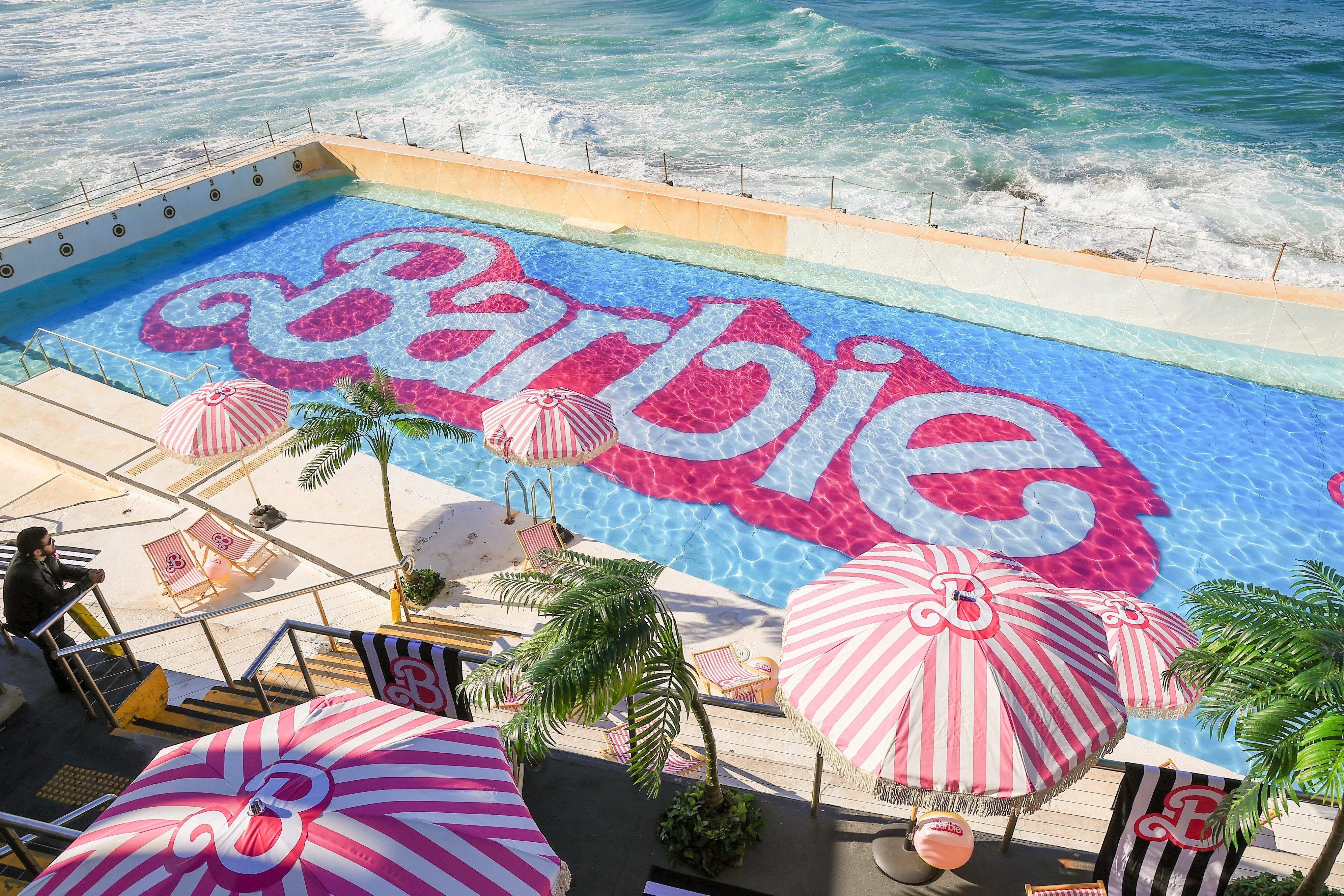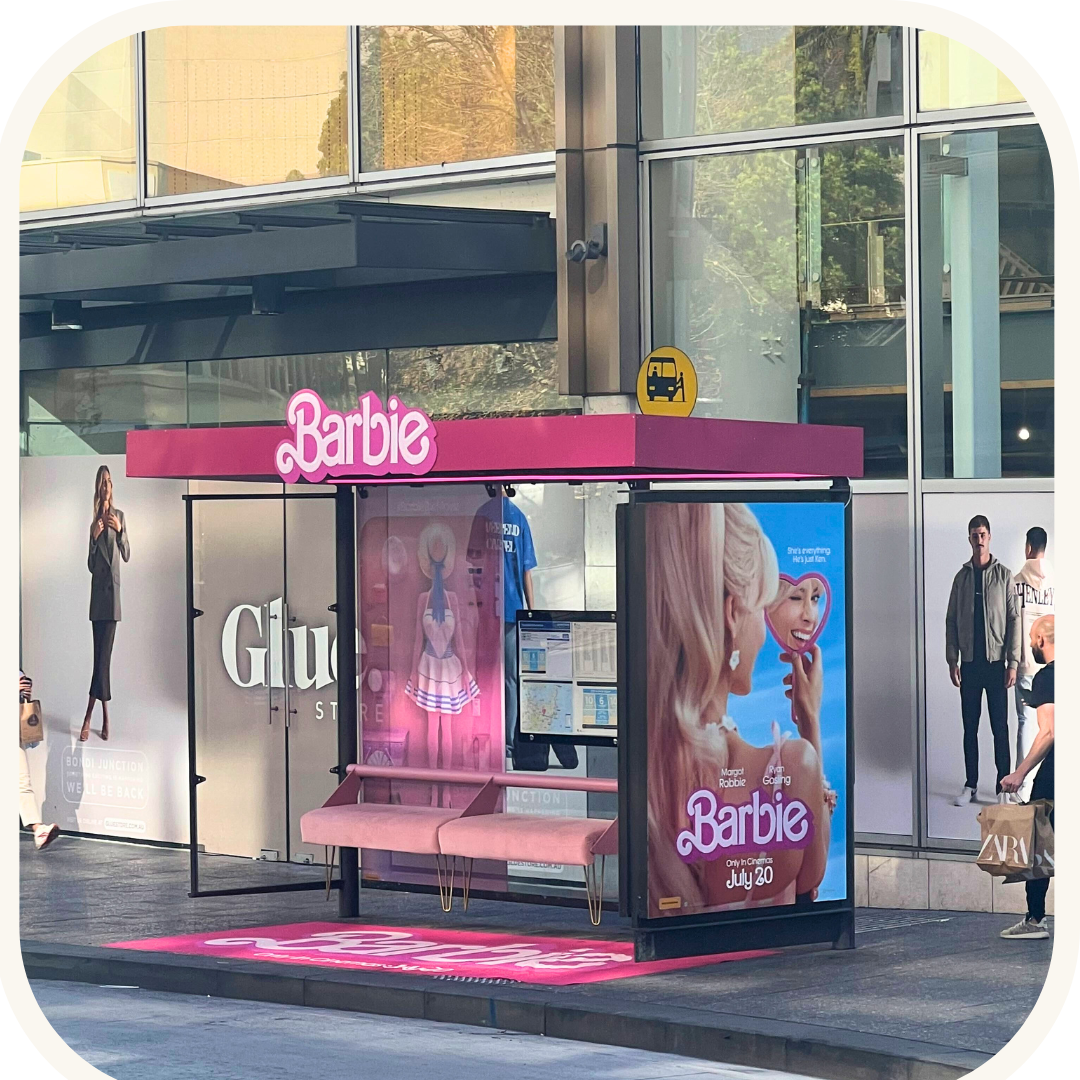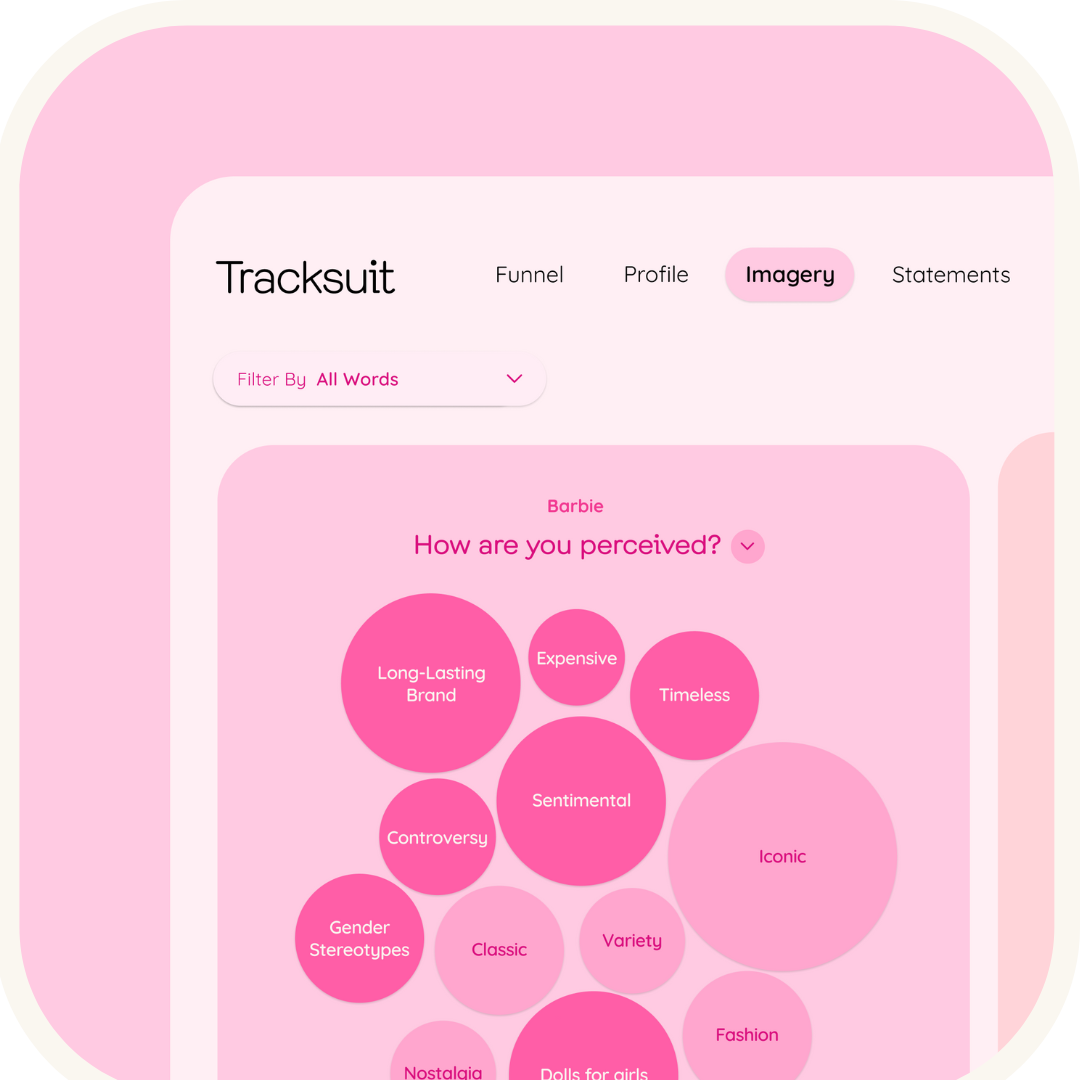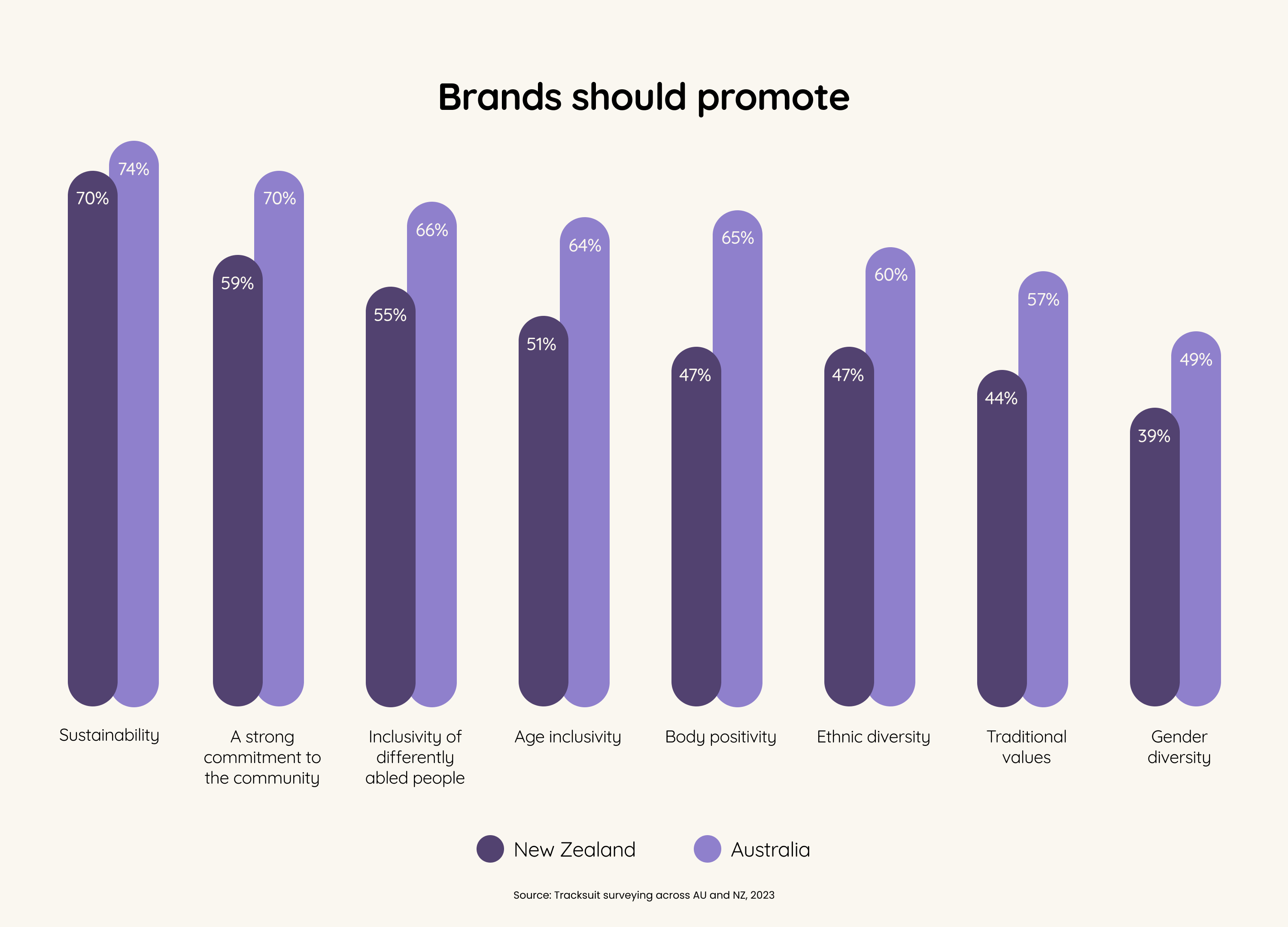How brand Barbie is a masterclass in reinvention

Barbie is the biggest marketing moment happening in the world right now. What do consumer perceptions tell us about this legacy brand’s quest for relevance?
It’s hard to miss Barbie coloring the world pink recently. The iconic doll was first introduced to the world in 1959 and 64 years on, a movie adaptation is coming to cinemas on July 20.
In the build up to the much-anticipated film, Barbie’s distinctive pink branding has been smattered across out-of-home billboards, social media channels and endless product partnerships, from Xbox consoles, to scented candles, to roller skates (apparently, Barbie is working with 100+ brands on collaborations. We believe it – she’s everywhere).
In Los Angeles, USA, Barbie’s Malibu Dreamhouse, opens in new tab was listed and available to stay in on Airbnb. Meanwhile, actress Margot Robbie cleverly accelerated the cultural conversation by taking viewers on a house tour via an Architectural Digest YouTube clip, opens in new tab
In Sydney, Australia, Bondi’s iconic Icebergs pool, opens in new tab was adorned with Barbie’s branding for a day, while burger chain Grill’d partnered with Barbie to deck out its CBD store as a Barbie dreamworld and launched a “Barbie Dreamburger Bundle, opens in new tab” that features a pink hamburger and sauce. Meanwhile, in Bondi Junction, JCDecaux Australia’s out-of-home bus stop was given a total makeover to promote the movie, complete with pink velvet seats.

The movie’s marketing efforts are truly unmatched. According to one report by Variety, the budget parent company Mattel has poured into this campaign is estimated to be an eye-watering $100 million USD (the marketing budget of our dreams, are we right?)
But beyond the wash of pink and all of the partnerships and promotions is a legacy brand’s quest to evolve and stay culturally relevant. If Barbie can win over a wider audience, a far bigger opportunity awaits its parent company Mattel outside of the toy aisle.
“Barbie tried to open up conversations around diversity and inclusion, and they have brought out new ranges of dolls that paint a different picture of what it means to be a woman. And I think that‘s been really important,” Tracksuit’s Head of Marketing Mikayla Hopkins told The Australian, opens in new tab.
“But I also feel like they’ve almost skirted around the fringe of what that could be. But now with this, I think it’s at scale. That changing narrative is coming into mainstream conversation.”
By regaining cultural relevance, Barbie can join the likes of Disney and LEGO in scaling toy lines into brand experience empires.
Sign up to Shorts
For fortnightly brand insights, stories and goodness that'll help you win (we promise).
Consumers’ perceptions of Barbie prior to the film launch 🤔
Tracksuit has been tracking Barbie’s brand across the United States and Australia from May to July. Our initial data shows that Barbie’s legacy (and the controversies that linger alongside it) still influence consumers’ views leading up to the film’s launch.
🇦🇺 In Australia, Barbie currently lags behind other well known toy brands LEGO and Hot Wheels in relatability. Just 49% of respondents agree Barbie is a brand that they relate to, versus 75% of respondents for LEGO and 66% for Hot Wheels.
As for brand love, 52% of respondents agreed Barbie is a brand that they love, versus 82% of respondents about LEGO and 67% for Hot Wheels.

🇺🇸 In the United States, Barbie’s brand has a stronger foothold. 60% of respondents agree that it’s a brand that they relate to and 65% consider it a brand that they love.
But demographic disparities also show the challenges the Barbie brand is up against. Barbie’s brand awareness is strongest in older generations aged 55 and over in Australia, likely due to the brand’s legacy having less resonance with younger consumers. A similar result can be seen in the United States.

Women also resonate more strongly with the brand than men, with 88% of women in Australia aware of Barbie and 52% considering using it, and 90% of women in the United States aware of the brand and 64% considering it.
Barbie is still seen as a very gendered toy and the brand is also most commonly associated with being a ‘doll for girls’ in Australia. Other raw responses from people surveyed include: “Gender stereotypes” “Old fashioned” “Sexist and demeaning”. Old fashioned was the top brand association, with 90 people’s answers to this open-ended question referencing this.

In the United States where the brand was founded, consumer sentiment is more positive. Raw responses include: “Increasingly for boys and girls” “Icon” and “Traditional”. The most common brand associations are “Doll”, “Girls” and “Fashion”.
Ahead of the Barbie movie, we also surveyed consumers across the US, UK, NZ and AU on what they think is a brand’s responsibility to promote.

Surprisingly, gender diversity was at the bottom of the list for all four markets. New Zealand had the lowest number of people who agreed that brands should promote this (39%), followed by the UK (45%), the US (47%) and AU (49%).

The top attributes consumers think brands should promote across all four markets are sustainability, a strong commitment to the community and inclusivity of differently abled people.
Elevating Barbie to become a pop culture sensation ✨
Despite the brand’s legacy associations that linger, we believe a brand reinvention is playing out in real time, and this will transform consumer sentiment in the coming months once all of this marketing activity has had time to resonate.
Mattel President and COO Richard Dickson said Mattel sees the film as a first step to “elevate the Barbie narrative into a pop culture sensation”.
“The evolution of Barbie can be seen as a case study of how brands with legacy reinvent themselves,” Richard said.
Rather than distance itself from the controversy, Barbie's marketing has embraced its legacy in a progressive, camp, tongue-in-cheek way. We see this messaging come through in the movie trailer, which states, “If you love Barbie, this movie is for you. If you hate Barbie, this movie is for you.”
Though Tracksuit’s research shows that Barbie has gaps in relatability and lovability due to previously showing a limited construct of what a woman can aspire to be, this is being reshaped by making the brand relevant to a much wider audience.
Barbie is targeting more broadly than ever before and showing up in channels that bring people of different genders, sexualities and ages into the conversation.
This expands the audience beyond those who play with dolls, as anyone can engage with the brand through its diverse range of product partnerships that includes a luggage line with Beis Travel, opens in new tabBarbie pink glassware, opens in new tab by Dragon Glassware, Pinkberry’s Barbie frozen yogurt, opens in new tab, and the Barbie dream car in the Forza Horizon 5 video game, opens in new tab.
This strategy builds future demand with people who aren’t interested in purchasing from the brand yet, but may be in the future (particularly as its product range expands beyond the toy aisle).
In the coming years, we expect to see brand experiences expand to theme parks, TV series and other product lines that will continue to snowball on the back of the success of the Barbie brand.
Tracksuit is continuing to survey consumers about Barbie in our key markets to track this progress. We’re excited to watch the impact of a brand reinventing itself to respond to modern-day culture, as well as the commercial success that can be gained from such a move.
Other legacy businesses, take note. Imagination, brand is your creation!



